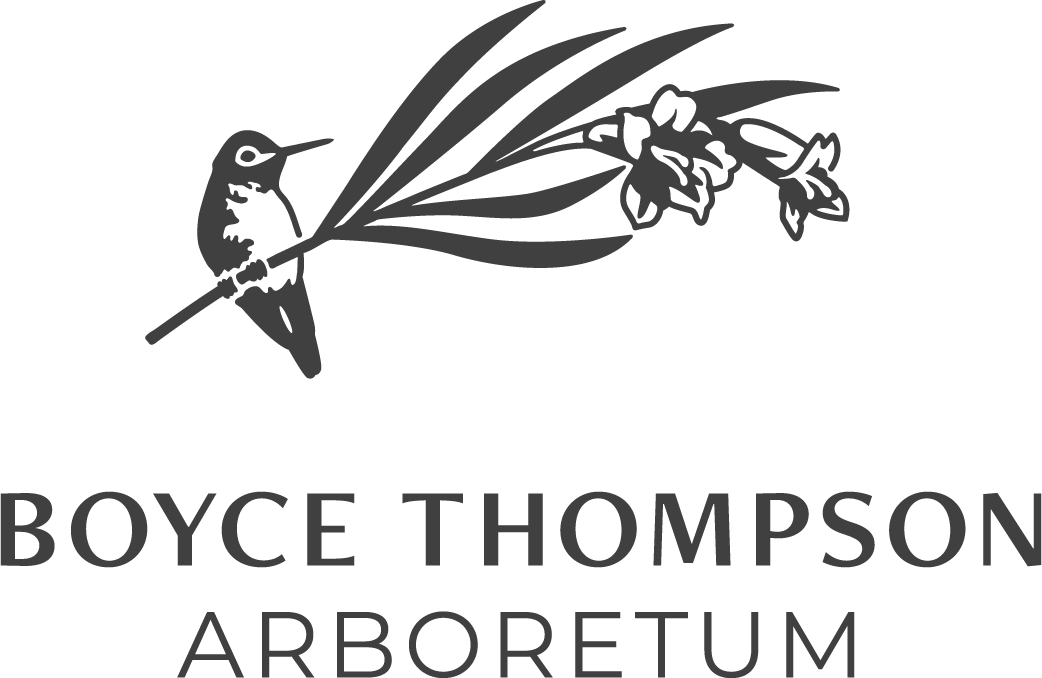The six-acre Cactus and Succulent Garden has its roots in the beginning of Boyce Thompson Arboretum itself—the first cactus and agaves were planted here in the early 1920’s.
Over the years the collection has expanded, and now features around 1,500 plants from the southwestern United States, Mexico, and South America in its forty rock-bordered beds just off the main trail.
The Cacti
Over two hundred species of cactus are represented here, one third of which are threatened with extinction in the wild. Forests of large columnar cactus including the native saguaro (Carnegiea gigantea), the Mexican fencepost cactus (Pachycereus marginatus), the organ pipe cactus (Stenocereus thurberi), and the South American cardón grande (Echinopsis terscheckii) dominate the heights, forming an impressive forefront against the skyline. Over twenty species of barrel cactus can be observed at their feet, including many sizable specimens of the golden barrel cactus (Echinocactus grusonii). Scattered throughout the garden are fifty species of prickly pear and cholla, ranging from small clumps of the bright purple Santa Rita prickly pear (Opuntia santa-rita) to the tree-sized Indian figs (Opuntia ficus-indica). In the understory, not to be ignored, are the smaller cacti. Thirty-three species of pincushion cactus (Mammillaria spp.), twenty-one species of Easter lily cactus (Echinopsis spp.), and ten species of hedgehog cactus (Echinocereus spp.), including both the locally endangered Arizona hedgehog (Echinocereus triglochidiatus var. arizonicus) and our very own Boyce Thompson hedgehog (E. boyce-thompsonii), present an assortment of forms. From late spring through early summer, hundreds of cacti in the collection put on a dazzling display of blooms.
The Succulents
The garden also features around 130 plant species categorized as succulent or semi-succulent. Forty-four different species of century plant (Agave spp.) grow here in sizes ranging from the small, compact Toumey’s agave (Agave toumeyana) to the massive American century plant (Agave americana). Six of the garden’s agave species, famous for only blooming once in their lifetimes, are threatened with extinction in the wild. Also featured in the collection are several large boojum trees (Fouquieria columnaris), one of which was wild-collected from Mexico in 1925. Now over thirty feet tall with a girth of around three feet, it is considered one of the largest specimens of its kind in the United States. Other notable plants include thirty large Yuccas, even a many-branched Joshua tree (Yucca brevifolia), and, for the discerning eye, several specimens of the diminutive and rare native San Francisco River leatherpetal (Graptopetalum rusbyi).
#1Arb
Tag us on Instagram with
@btarboretum #1Arb








